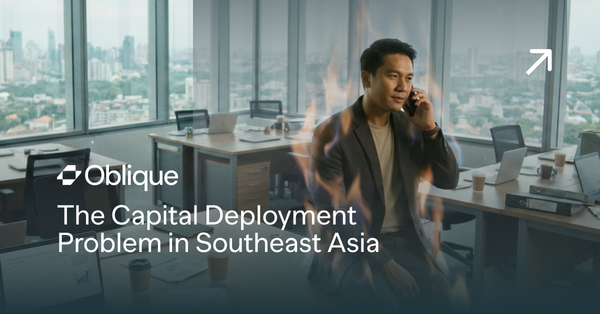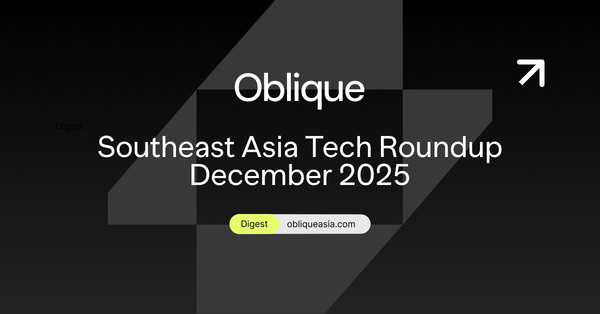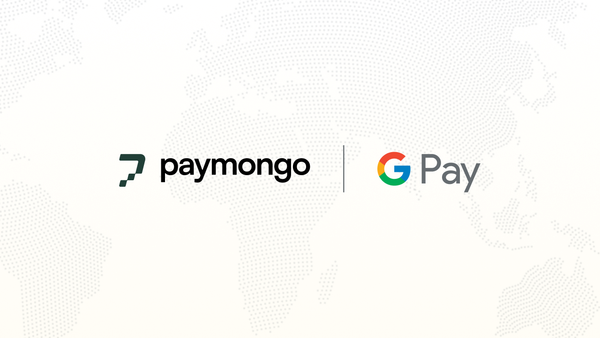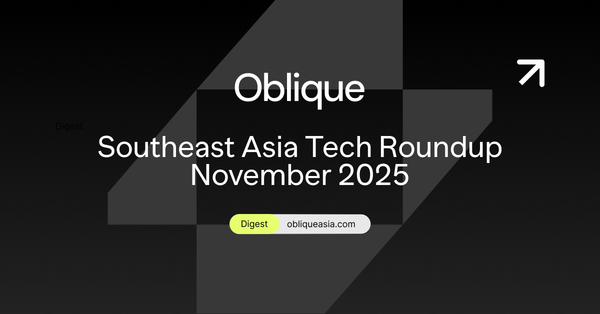SEA's Funding Slow Burn—Is Early-Stage the Last Safe Haven?
SEA startups face crunch: Over 95% of deals are early-stage, but seed funding has halved and late-stage capital remains scarce. Singapore claims 92% of funding, while more founders now contend with shorter runways and tougher fundraising than before.

The venture capital funding winter that began gripping Southeast Asia in 2022 has evolved into something more complex than a simple downturn—it's become a structural recalibration that's forcing uncomfortable questions about the region's startup ecosystem. While headlines scream about funding falling to six-year lows, with just $1.85 billion deployed across 229 deals in the first half of 2025, a more nuanced story emerges when examining the data through the lens of stage distribution.
Early-stage funding has collapsed dramatically, plummeting from $4 billion in 2022 to just $800 million in 2025 on a pro-rated basis. Yet even as pre-seed and seed rounds shrivel—with seed funding dropping 50% to $50.7 million in H1 2025—these early investments continue to represent the vast majority of deal flow. In August 2025, early-stage rounds accounted for 85.1% of total funding, with no late-stage deals recorded at all.
This concentration isn't necessarily the strength signal it appears to be.
The Resilience Illusion
The conventional wisdom suggests early-stage resilience stems from fundamental strengths: lower capital requirements, more flexible business models, and reduced exposure to the public market volatility hammering late-stage valuations. Fund managers are finding it easier to write $500K checks than $50M ones, creating an artificial floor that masks deeper structural issues.
But dig deeper into the investor thesis statements emerging from the region's most active VCs, and a different picture emerges. East Ventures, 500 Global, and other early-stage stalwarts aren't doubling down because they see compelling fundamentals—they're retreating to familiar territory as late-stage capital evaporates. When Insignia Ventures Partners describes the current environment as requiring "capital efficiency and strong fundamentals", it's code for investors demanding proof of concept before they'll engage, even at the seed level.
The Philippines surpassing Indonesia in startup funding for the first time—$86.4 million versus $78.5 million in H1 2025—illustrates this dynamic perfectly. It's not that Philippine startups suddenly became more attractive; it's that Indonesian mega-deals dried up, revealing the underlying fragility of a system dependent on large late-stage rounds to paper over early-stage weaknesses.
The Concentration Risk
Singapore's dominance has reached unprecedented levels, attracting 92% of SEA's funding in H1 2025. This isn't efficiency—it's risk concentration masquerading as market maturation. When three deals—Thunes ($150M), Airwallex ($150M), and Bolttech ($147M)—account for over half of all fintech funding in the region, it signals an ecosystem where capital is flowing to the safest bets rather than the most innovative ones.
The absence of billion-dollar funding rounds in 2025, compared to Sea Ltd's $6 billion and Grab's $4.5 billion raises in 2021, isn't just a function of market sentiment. It reflects a fundamental shift from growth-at-all-costs to sustainability-first investing that leaves early-stage companies caught in a bind: too risky for cautious investors, too small for the few remaining late-stage funds willing to deploy capital.
Strategic Implications for Q4 2025
Three trends will define the remainder of 2025 for founders navigating this landscape:
The Rise of Alternative Capital: Revenue-based financing, venture debt, and family office investments are filling gaps left by traditional VC. HSBC's $1 billion ASEAN Growth Fund and $150 million venture debt program signals institutional recognition that equity rounds alone won't sustain the ecosystem.
Geographic Arbitrage: Vietnam's 169% funding surge to $275 million and Malaysia's doubling to $196 million demonstrate that founders willing to look beyond traditional hubs can find opportunity. The question is whether these markets can sustain momentum without late-stage follow-on capital.
Sector Consolidation: AI startups saw 217% growth while climate tech attracted $725 million, but this concentration around buzzword sectors suggests investors are herding toward perceived safe havens rather than identifying genuine market opportunities.
The Last Domino Question
Early-stage's apparent resilience may be nothing more than a lagging indicator. When 59% of Southeast Asian startups are operating with less than 12 months of runway, and down rounds hit a decade high globally at 15.9% of venture-backed deals, the early-stage "safety" becomes questionable.
The real test isn't whether early-stage deals can maintain their 85% share of deal flow—it's whether these companies can survive long enough to reach Series A without the late-stage ecosystem recovering. With median early-stage deal sizes shrinking and due diligence timelines extending, even pre-seed and seed companies are facing the same scrutiny previously reserved for growth-stage ventures.
Southeast Asia's early-stage ecosystem isn't a safe haven—it's a bottleneck. Without late-stage capital returning to provide viable exit paths, today's early-stage investments risk becoming tomorrow's zombie portfolio companies. The region's startup ecosystem has merely postponed its reckoning, not avoided it.
The funding winter isn't ending; it's just moving down the stack, one stage at a time.





